#remembrance day in canada
Photo

“Workless Veteran Faints of Hunger,” Montreal Star. November 11, 1932. Page 1.
----
OTTAWA, Nov. 11 - (CP) - Ernest Scullin, 35, unemployed war veteran of Montreal, who took part in the ex-service men’s parade to Parliament Hill today, collapsed on the street near the Ottawa Post Office, and was taken to the General Hospital, Water street. His collapse was due, it was stated by hospital authorities, to undernourishment. It was also learned that Scullin had come to Ottawa to lay a claim before the Pensions Board.
#ottawa#parliament hill#military parade#remembrance day#canadian veteran#ex-service men's association#unemployed veterans#poverty#pensioner#military pension#politics of remembrance day#history of remembrance day#remembrance day in canada#history of remembrance day in canada#great depression in canada
5 notes
·
View notes
Photo

Sergeant of the Royal Engineers Signals Section putting a message into the cylinder attached to the collar of a messenger dog at Etaples, 28 August 1918.
#ww1#world war 1#The First World War#history#historical photos#war history#battlefield#british army#wwi#The Great War#1918#1917#1916#Veterans#remembrance day#alberta canada#canada#1914#france#belgium
331 notes
·
View notes
Text
Adventures in Librarian-ing
I was reading from the picture book Finding Winnie: The True Story of the World's Most Famous Bear by Lindsay Mattick to classes for Remembrance Day back at the beginning of November.

As we got to the end, one student would always ask if Winnie was still alive, to which I would gently remind them that Winnie lived a hundred years ago, so she had died quite a while back.
When they'd look sad I'd add "But she died old, fat, and very happy and pampered, so she lived a good life."
And all the kids would start laughing.

#school librarian#school libraries#librarylife#libraryland#the real life of me#canada#libraries#elementary school#remembrance day#winnie the pooh#winnipeg#world war i#world war 1
94 notes
·
View notes
Text
Saskatchewan Lt.-Gov. Russ Mirasty received the first poppy of the year at Government House in Regina Thursday, a day after the provincial government announced planned legislation for the symbol of remembrance — which would include ensuring workers are allowed to wear a poppy while on the job.
The throne speech Mirasty read in the legislative assembly Wednesday laid out the government's policy priorities for the fall sitting, including introducing the Saskatchewan Remembrance Day Observance Act. It would prohibit workplace policies that say employees can't wear a poppy at work.
Full article
Tagging: @politicsofcanada
#cdnpoli#canadian#canadian news#canada#canadian politics#saskatchewan remembrance day observance act#saskatchewan#poppies#remembrance day#russ mirasty#scott moe
26 notes
·
View notes
Text
29 notes
·
View notes
Text
Remembrance Day this year is an absolute sham, even more so than usual.
There's a literal genocide going on in Palestine right now that our ruling political party is actively supporting. Not to mention we are still selling arms to Saudi Arabia, who are committing their own genocide in Yemen.
Remembrance my ass, our leaders only want to remember the "right" people who died in the cause of freedom.
8 notes
·
View notes
Text
Today, in Canada, it’s the National Day of Remembrance and Action on Violence Against Women.
Why is it on December 6th? Because on that day in 1989, a man killed 14 women at an engineering school in Montreal to “fight feminism”.
Let’s remember those 14 women and keep fighting to stop violence against women, because the fight is far from over…
#polytechnique#montréal#6 décembre 1989#je me souviens#national day of remembrance and action on violence against women#white ribbon day#canada
33 notes
·
View notes
Text
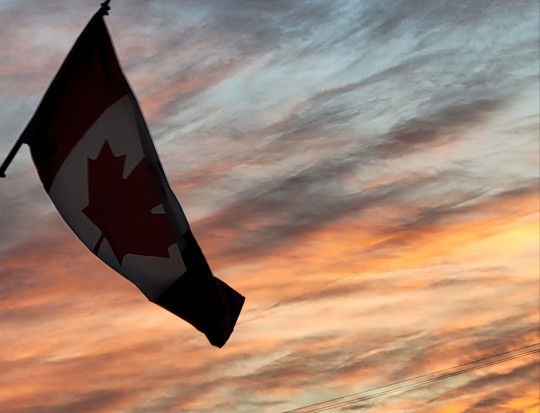
Oh Canada 🇨🇦 Remembrance Day
#photographers on tumblr#canada#remembrance day#flag#sky#original photography on tumblr#saskatchewan#looking up#november
31 notes
·
View notes
Photo


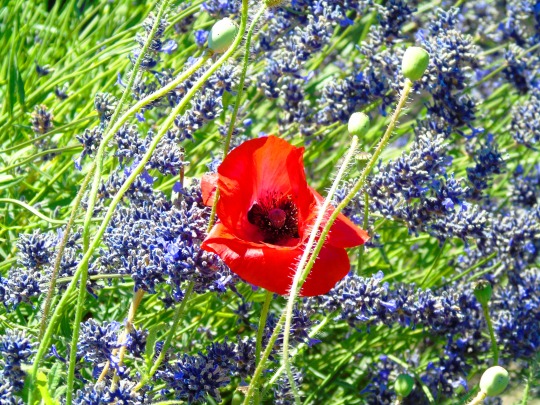


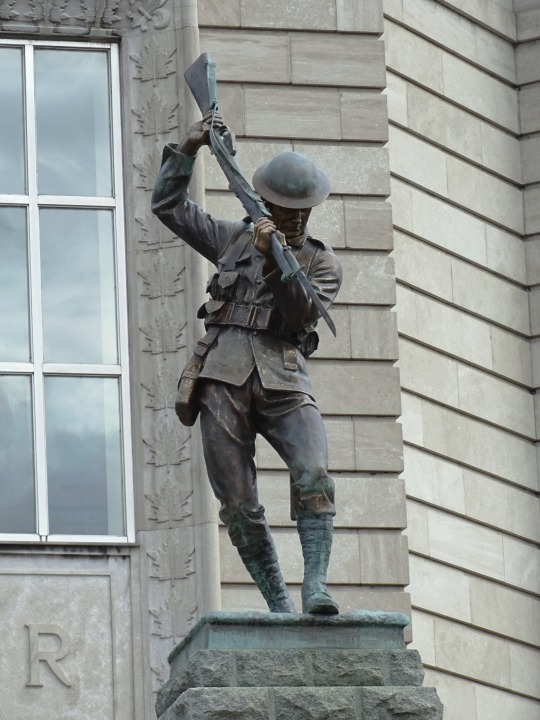




Remembrance Day
Remembrance Day (sometimes known informally as Poppy Day) is a memorial day observed in Commonwealth of Nations member states since the end of the First World War to remember the members of their armed forces who have died in the line of duty. Following a tradition inaugurated by King George V in 1919, the day is also marked by war remembrances in many non-Commonwealth countries. Remembrance Day is observed on 11 November in most countries to recall the end of hostilities of World War I on that date in 1918. Hostilities formally ended “at the 11th hour of the 11th day of the 11th month”, in accordance with the armistice signed by representatives of Germany and the Entente between 5:12 and 5:20 that morning. (“At the 11th hour” refers to the passing of the 11th hour, or 11:00 am.) The First World War officially ended with the signing of the Treaty of Versailles on 28 June 1919.
The memorial evolved out of Armistice Day, which continues to be marked on the same date. The initial Armistice Day was observed at Buckingham Palace, commencing with King George V hosting a “Banquet in Honour of the President of the French Republic” during the evening hours of 10 November 1919. The first official Armistice Day was subsequently held on the grounds of Buckingham Palace the following morning.
The red remembrance poppy has become a familiar emblem of Remembrance Day due to the poem “In Flanders Fields” written by Canadian physician Lieutenant-Colonel John McCrae. After reading the poem, Moina Michael, a professor at the University of Georgia, wrote the poem, “We Shall Keep the Faith,” and swore to wear a red poppy on the anniversary. The custom spread to Europe and the countries of the British Empire and Commonwealth within three years. Madame Anne E. Guerin tirelessly promoted the practice in Europe and the British Empire. In the UK Major George Howson fostered the cause with the support of General Haig. Poppies were worn for the first time at the 1921 anniversary ceremony. At first real poppies were worn. These poppies bloomed across some of the worst battlefields of Flanders in World War I; their brilliant red colour became a symbol for the blood spilled in the war.
Source
#In Flanders Fields by Lieutenant-Colonel John McCrae#poppy#Canada#USA#Remembrance Day#Community Veterans Memorial#Munster#Indiana#Sequim#Purple Haze Organic Lavender Farm#Sweden#wildflower#travel#Ontario Veterans Memorial#National War Memorial by Vernon March#Ottawa#Toronto#Ontario#Trois-Rivières#Québec#Monument to the Brave by Cœur-de-Lion McCarthy#11 November#Allan Harding MacKay#11 November 1918
38 notes
·
View notes
Text
I'm definitely getting sappier the older I get cause that Remembrance Day ceremony was hitting harder than usual this year.
#i watched the one in Ottawa and the Last Post gets me every time#ottawa#their rendition of danny boy was good#idk the ceremony seemed a little more poignant this year#I would love to attend that ceremony in person some day#no fr I've been holding back tears throughout the whole damn thing#remembrance day#remembrance day canada
2 notes
·
View notes
Photo
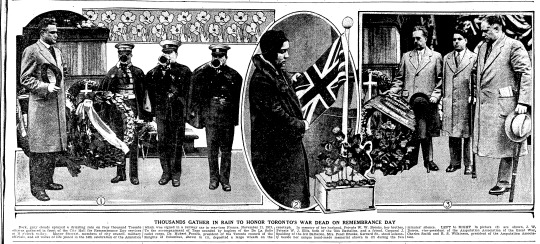
“Thousands Gather in Rain To Honour Toronto’s War Dead,” Toronto Star. November 11, 1932. Page 19.
----
Dark, grey clouds sprayed a drizzling rain on four thousand Toronto citizens gathered in front of the City Hall for Remembrance Day services at 11 o’clock today. Mayor Stewart, member of the city council, military officials, and all walks of life joined in the 14th celebration of the Armistice which was signed in a railway car in war-torn France, November 11, 1918. To the accompaniment of Taps sounded by buglers of the De La Salle cadet corps, Dr. Hubert Pocock, president of the Toronto council of the Knights of Columbus, shown in (1) deposited a large wreath on the cenotaph. In memory of her husband, Private W. W. Brooks, her brother, Private W. J. Ellis, both of the 75th Battalion, and a friend, Corporal J. Spalding of the 3rd Battalion, Mrs. Pearl Brooks, Gerrard St., stood solemnly beside her unique hand-made memorial shown in (2) during the two minutes’ silence. LEFT to RIGHT in picture (3) are shown, J. W. Doiron, vice-president of the Amputation Association of the Great War, Charles Smith and R. S. Wilkinson, president of the Amputation Association.
#toronto#city hall#remembrance day#remembrance day in canada#history of remembrance day#knights of columbus#cenotaph#canadian veterans#war wounded#war dead#armistice day#war amps#world war 1#world war 1 canada#great depression in canada
4 notes
·
View notes
Photo
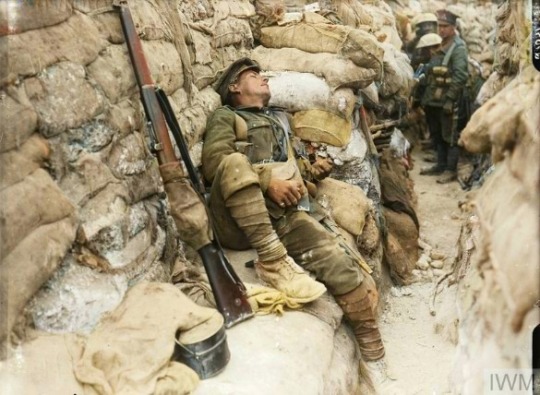
The Battle of Thiepval. An exhausted soldier asleep in a front line trench at Thiepval, September 1916.
#ww1#world war 1#The First World War#history#historical photos#war history#battlefield#british army#wwi#The Great War#1918#1917#1916#Veterans#remembrance day#alberta canada#canada#1914#france#belgium
187 notes
·
View notes
Text
A Canadian college invited a trans-identified male to speak on violence against women in observation of the 33rd anniversary of an act of mass femicide.
Fae Johnstone, a trans-identified male, gave a keynote address today at Durham College in North Oshawa, Ontario as part of the school’s National Day of Remembrance Ceremony marking the anniversary of a massacre that left 14 women dead.
Johnstone, who describes himself as “trans feminine and non-binary,” is the Executive Director at Wisdom2Action, an LGBT-focused consulting firm. Johnstone’s website lists him as a “public speaker, consultant, educator and community organizer on unceded, unsurrended Algonquin territory.”
On Twitter, Johnstone announced his speech was part of the school’s “16 Days of Activism” to end “GBV [gender-based violence].”

The event Johnstone spoke at today is described on the Durham College website as commemorating the National Day of Remembrance and Action on Violence against Women in Canada.
The Day was first inaugurated by Parliament in 1991 as a way to honor the lives lost during the École Polytechnique massacre, which took place on December 6, 1989 in Montreal, Quebec. On the campus of the scientific university, a man identifying as an “anti-feminist” targeted female students for slaughter.
Prior to shooting all of the women in a mechanical engineering class, Marc Lépine, born Gamil Rodrigue Liass Gharbi, told the male students to leave the room. He then told the women he was “fighting feminism” and expressed a hatred of women’s rights to an education.
“You’re women, you’re going to be engineers. You’re all a bunch of feminists. I hate feminists,” Lépine said, before opening fire on the female students. Lépine later committed suicide on the campus after taking 14 women’s lives, and injuring 10 more people.
In total, Lépine murdered 14 women in an act that has since been recognized an act of terrorism.

After his speech at Durham College tonight, Johnstone was confronted by Jennifer Anne, a Canadian women’s rights advocate who has been working to secure the release of the analysis that was done on gender self-identification legislation in Canada.
Anne attended the event and recorded some of Johnstone’s address before proposing a question when given the opportunity by the event’s host.
“Today is the day we mark 14 women who were killed in Montreal by a man who subjected them simply because they were female. It is sex-based violence, not gender based violence. I am a female,” Anne is heard saying, before listing off examples where self-identification lead to the victimization of women.
“I am wondering why, on this day, we would have a man dressed in women’s garb to talk to us about sex-based violence and keeping women safe? How can women stay safe in this environment?”
Johnstone replies curtly: “Thank you. Next question!”
“Really? So you’re not going to answer it because you know I’m right?” Anne responds. The host of the event, as well as other administrators, are then heard trying to discourage Anne from continuing to assert her question.
Anne uploaded the recordings to her Twitter account.

Johnstone’s consulting firm, Wisdom2Action, marked the anniversary of the women’s deaths by posting an infographic titled “Queering GBV,” which asserted that “gender based violence disproportionately impacts 2SLGBTQ+ people who are BIPOC, transfeminine, bisexual, youth, newcomers, disabled, homeless, and/or involved in sex work.”
For Canadian Women’s History Month in October, Johnstone was “honored” by a Government ministry for his work with “2SLGBTQI+” people.

Johnstone had previously slammed the Canadian Femicide Observatory for “retweeting TERF and TERF rhetoric.” TERF is a derogatory term most frequently applied to women who acknowledge two distinct sex groups.
He also claimed the Declaration on Women’s Sex Based Rights was a “roadmap for erasing trans people from public life, denying our rights and restricting our healthcare.”
Johnstone is not the first trans-identified male be given a platform to speak on the National Day of Remembrance and Action on Violence against Women.
Last year on December 6, the Prince Edward Island Advisory Council on the Status of Women invited Anastasia Preston, a biological male who identifies as a woman, to speak on “gender-based violence” at a vigil honoring the women murdered in the École Polytechnique massacre.
Preston, a “trans community outreach coordinator” at a sexually transmitted disease resource service, became the subject of widespread outrage on social media after he was interviewed by the Prince Edward Island branch of the CBC and claimed that trans-identified males were not given enough opportunities to speak on violence against women.
“For decades, trans women have been kept out of the conversation around gender-based violence,” Preston was quoted as saying, going on to assert that he intended to “speak about some of [his] experiences of harassment on P.E.I.” at the event memorializing the 14 women who were murdered.
After the article began to circulate, CBC P.E.I was so inundated with backlash they had to turn off their Twitter comment section. Johnstone defended Preston at the time, calling him a “hero and a champion.”
By Jennifer Seiland Jennifer is a founding member of the Reduxx team, writing with a focus on crimes against women and sex-based rights advocacy. She is located in the American south where she is a passionate animal welfare advocate and avid coffee drinker.
#Canada#Montreal massacre#december 6#Durham College#North Oshawa#Ontario#National Day of Remembrance Ceremony#Fae Johnstone is a man#Wisdom2Action#École Polytechnique massacre#14 women killed by male violence#Jennifer Anne is a heroine#Queering sex based violence is just men making any issue about themselves#Canadian Femicide Observatory
9 notes
·
View notes
Text

Lest we forget. 🌹
#my art#surfingthesealand draws#iammatthewian project#iammatthewian#iamp#iamp: nova scotia#nova scotia#project canada#pc: nova scotia#poppy#remembrance day#remembrance day 2022#lest we forget
5 notes
·
View notes
Note
Hi Sarah. I was thinking about the Great War. I know theres a lot if songs that compare love to wars (like Love is A Battlefield, Taylor has used the metaphor several times) but I was finding the Great War a bit icky. I decided it was the referenced poppies (what I think the crimson clovers are, as well as 'pinned a poppy in my hair'). Idk if you know but poppies are the symbol of remembrance in the UK (Taylor has worn them when shes on TV here in late October/ November). It just seems really off to turn a symbol of remembering people who were literally murdered in wars into a metaphor about making up with your bf. Same with 'plant a memorial garden'- it just seems a bit tasteless to say that about a domestic argument, you know? Like I don't mind the more generic war similes/ metaphors, but it seems really wrong for Taylor to use those particular modern symbols of war and remembrance and make it about herself
Hi! I understand how this imagery might take the war/battle metaphor too far and too specific for you. And that's totally fair if it turns you off. I can absolutely see how it could. I personally like the vivid imagery but the historical context and weight of these metaphors is something to be aware/cognizant of when listening.
I don't know if it changes anything but I also think the line is 'memory' garden, not 'memorial' garden. It likely all amounts to the same thing, but 'memory' sounds softer and more personal to me like marking a place and time to remember a period of darkness and reflect on that to ensure it's not repeated. Vs a memorial cemetery dedicated to laying to rest veterans etc.
4 notes
·
View notes
